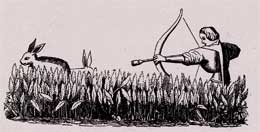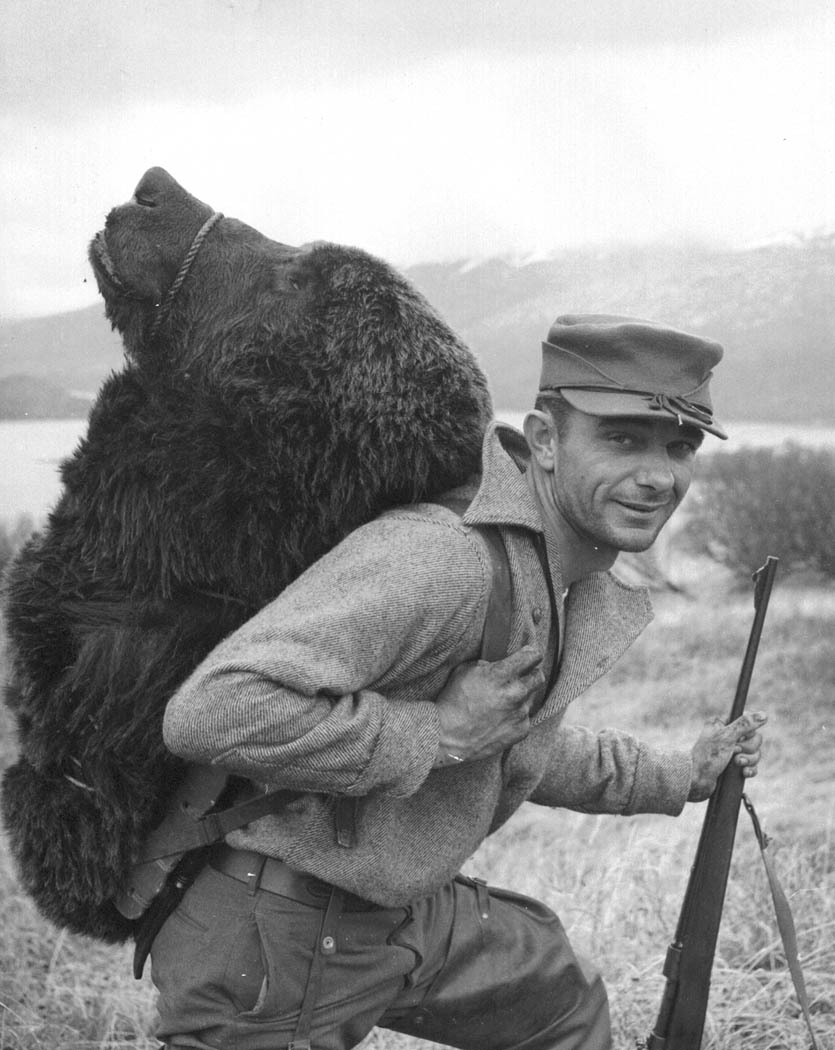 |
| Homo Sapiens Hunting a big Rhyno with Sticks and Stones |
Furthermore there is evidence that hunting may have been one of the multiple environmental factors leading to extinctions of the holocene megafauna, and their replacement by smaller herbivores. It has been found that the North American megafauna extinction was coincidental with the Younger Dryas impact event, possibly making hunting a less critical factor in prehistoric species loss than had been previously thought. However, in other locations such as Australia, humans are thought to have played a very significant role in the extinction of the Australian megafauna that was widespread prior to human occupation.
Of the closest surviving relatives of the human species, Pan, the Common Chimpanzee has an omnivorous diet, which includes troop hunting behaviour based on beta males being led by an alpha male, however the less violent Bonobos, have a mostly frugivorous diet.
 |
| Hunting with a Bow |
While it is undisputed that early humans were hunters, the importance of this for in the emergence of the Homo genus from the earlier Australopithecines, including the production of stone tools and eventually the control of fire, are emphasised in the hunting hypothesis, and de-emphasised in scenarios that stress omnivory and social interaction, including mating behaviour, as essential in the emergence of human behavioural modernity. With the establishment of language, culture, and religion, hunting became a theme of stories and myths, as well as rituals such as dance and animal sacrifice.
 |
| Use of Guns for Hunting |
Hunting was a crucial component of hunter-gatherer societies before the domestication of livestock and the dawn of agriculture, beginning about 11,000 years ago. By the Mesolithic, hunting strategies had diversified with the development of the bow by 18,000 years ago and the domestication of the dog about 15,000 years ago. There is fossil evidence for spear use in Asian hunting dating from approximately 16,200 years ago.
Many species of animals have been hunted throughout history. It has been suggested that in North America and Eurasia Caribou and wild reindeer "may well be the species of single greatest importance in the entire anthropological literature on hunting" although the varying importance of different species would depend on the geographic location.
Hunter-gathering lifestyles remained prevalent in some parts of the New World, Sub-Saharan Africa, and Siberia, as well as all of Australia, until the European Age of Discovery. They still persist in some tribal societies, albeit in rapid decline. Peoples that preserved paleolithic hunting-gathering until the recent past include some indigenous peoples of the Amazonas (Aché), some Central and Southern African Bushmen (Hadza people, Khoisan), some peoples of New Guinea (Fayu), the Mlabri of Thailand and Laos, the Vedda people of Sri Lanka, and a handful of uncontacted peoples.









0 comments:
Post a Comment